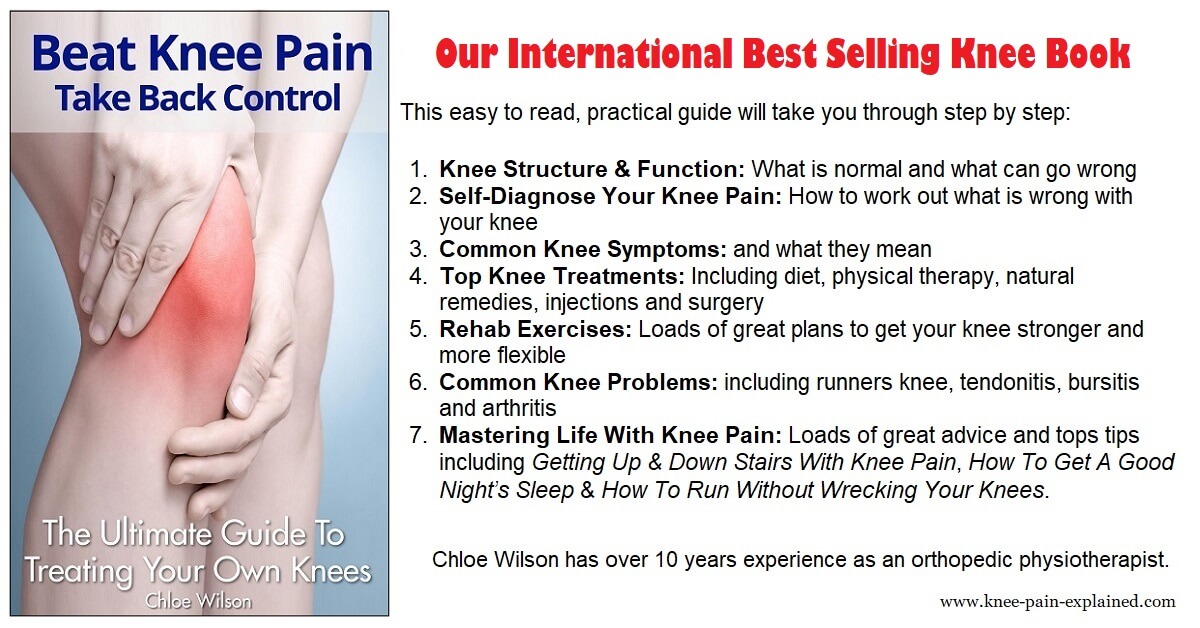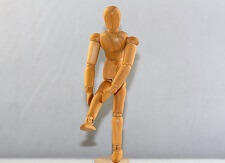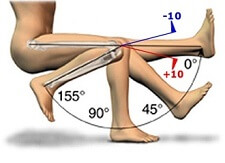- Home
- Knee Pain Diagnosis
- Swollen Knee
- Swelling Behind the Knee
Swelling Behind The Knee
Written By: Chloe Wilson, BSc(Hons) Physiotherapy
Reviewed by: KPE Medical Review Board
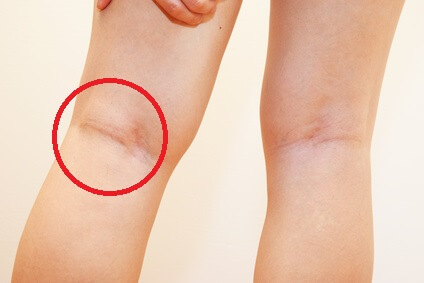
There are a number of different causes of swelling behind the knee.
The most common is a Bakers Cyst where there is inflammation of the popliteal bursa at the back of the knee.
Sometimes there is back of knee swelling and pain, other times there is a lump behind the knee but no pain associated with it. It might be that only one knee is swollen, or there may be swelling behind both knees.
Most times when the back of the knee is swollen, it can be treated with a combination of rest, regular ice, compression bandages, exercises and physical therapy, but some case may require knee surgery.
If your swelling is more round the side of your knee rather than at the back, check out the Side Knee Swelling article.
What Causes Swelling Behind The Knee?
There are a number of different causes of swelling behind the knee. In most cases, back of knee swelling is caused by a build-up of fluid or an abnormal growth in the popliteal space – the soft area at the back of the knee.
Here we look at six common causes of swelling behind the knee, the causes and symptoms of each, how to tell whether your lump behind the knee something serious and the best ways to treat the causes of swelling behind the knee.
1. Baker’s Cyst
The most common cause of swelling behind the knee is a Baker’s Cyst aka popliteal cyst which presents as a large, soft lump behind the knee.
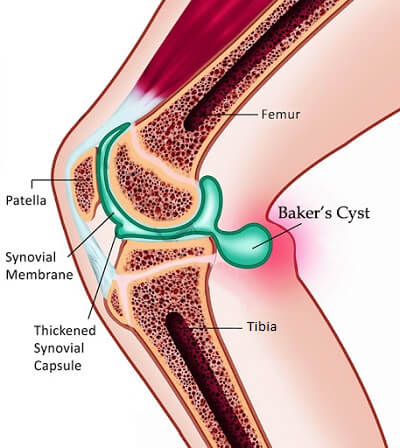
What Is A Baker’s Cyst? A baker’s cyst develops when there is inflammation of the popliteal bursa, a small fluid filled sac found at the back of the knee.
The popliteal bursa sits between the one of the hamstring tendons, semimembranosus, and one of the calf muscles, gastrocnemius. The bursa helps to reduce friction between the two muscles allowing smooth, pain-free knee movements.
What Causes A Bakers Cyst? The knee joint is surrounded by a fluid filled sac which lubricates the joint and provides the necessary nutrients to keep then joint healthy.
If the knee is damaged or injured, it produces extra fluid in order to protect the joint, provide lubrication and speed up healing. Sometimes, excess fluid seeps backwards out of the joint and collects in the popliteal bursa, causing it to swell. As the swelling builds up, it can form a lump behind the knee, known as a Baker's Cyst.
The most common cause of swelling behind the knee from a Baker’s Cyst is osteoarthritis, with around half of all knee arthritis sufferers experiencing a Baker’s Cyst at some point. Gout knee, a type of inflammatory arthritis, can also result in a Popliteal Cyst, as can knee injuries such as a meniscus tear or ligament sprain.
The main symptoms of a Baker’s Cyst are:
- Swelling behind the knee with pain - typically a defined lump rather than generalized swelling
- Aching sensation in the knee and calf
- The knee may feel like it is giving way
A Baker’s Cyst forms a palpable pocket of swelling in the popliteal fossa forming a lump behind the knee which typically feels like a small, squashy orange.
People with a Popliteal Cyst may notice a small degree of back of knee swelling before getting any knee pain. As the knee cyst fills up with more fluid and grows, there will be more obvious swelling behind the knee with pain, particularly when bending the knee as this squashes the popliteal cyst.
If the popliteal cyst behind the knee bursts, the fluid seeps down into the calf and pain typically radiates down towards the ankle.
Swelling behind the knee with pain from a popliteal cyst is easily treatable but there is a high risk of recurrence without the proper treatment – find out more about Baker’s Cyst Treatment.
2. Hamstring Injuries
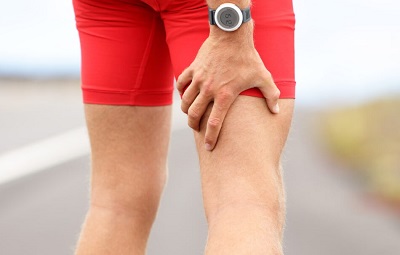
Another common cause of swelling behind the knee is a hamstring injury, typically a hamstring strain/tear or hamstring tendonitis.
The hamstrings are made up of three muscles that run down the back of the thigh from the pelvis to the back of the tibia, just below the knee.
The hamstrings are particularly prone to injury because they cross to joints, the hip and the knee. They are in their most vulnerable position when the hip is bent and the knee straightens e.g. when kicking or running.
Hamstring tendonitis is an overuse injury where repetitive strain results in inflammation and degeneration of one of the hamstring tendons. Symptoms typically come on gradually over time and may include:
- pain behind the knee or in the back of the thigh that gets worse with activity
- swelling behind the knee as the tendon thickens
- knee stiffness and weakness
A hamstring strain occurs when one of the hamstring muscles is suddenly overloaded or overstretched. There are three different grades of hamstring strain depending on how much damage there is. Symptoms are usually felt immediately at the time of injury and can persist for a number of weeks:
- popping/tearing sound at the time of injury
- bruising and swelling behind the knee and in the back of the thigh
- significant loss of strength, power and range of motion
- with grade 3 injuries there will be severe limitations with mobility and functional ability
You can find out all about how hamstring injuries cause pain and swelling behind the knee and how to treat them in the hamstring tendonitis and pulled hamstring sections.
3. Gastrocnemius Tear
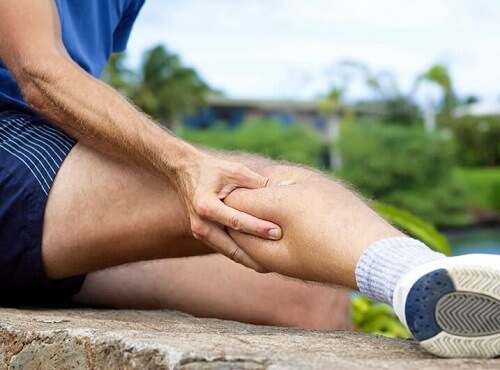
A tear in one of the calf muscles, gastrocnemius, is another possible cause of swelling behind the knee.
A gastrocnemius tear develops when the calf muscle is suddenly overstretched, typically by forcefully pushing-off through the foot.
Gastrocnemius tears usually occur during activities such as tennis, jumping and running, particularly on hills.
Common symptoms of a gastrocnemius tear include:
- Audible “Pop”: at the time of injury
- Immediate Pain: in the back of the calf, which may radiate to the back of the knee and down the leg
- Swelling: behind the knee and in the calf
- Bruising: and discolouration
- Palpable Dip: in the muscle at the site of the tear
- Tenderness: to touch over the tear
- Calf Weakness: particularly when pushing off through the foot
Swelling behind the knee from a gastrocnemius tear is most common in men aged 40-60 years. The amount of swelling in the back of the knee will depend on the severity of the tear and what proportion of the calf muscle is torn, the greater the tear, the more fibres are damaged and the more back of knee swelling and pain.
Prompt calf tear treatment helps to reduce the pain and swelling behind the knee, speed up healing and prevent further damage to the knee and calf. Find out more about calf tear treatment.
4. Popliteal Aneurysm
A popliteal aneurysm is where there is an abnormal bulge in the popliteal artery, the main artery at the back of the knee. Popliteal aneurysms tend to be asymptomatic and are the most common cause of swelling behind the knee with no pain.
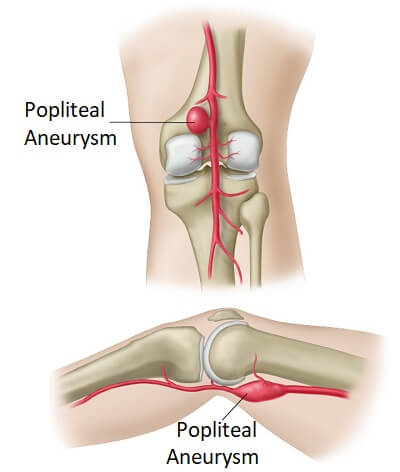
The distinguishing feature of a popliteal aneurysm is a palpable pulsating lump behind the knee. It is easiest to detect this swelling behind the knee when the knee is partially bent.
In around 50% of cases, people have bilateral popliteal aneurysms, i.e. swelling behind both knees.
If the popliteal aneurysm lump behind the knee is large enough, it may press on the surrounding nerves, causing pins and needles, numbness and/or weakness in the calf.
The causes of popliteal aneurysms are usually unknown, but they are often due to a combination of genetic factors, atherosclerosis, inflammatory processes and smoking.
Weakness in the arterial wall and a collection of small blood clots causes the popliteal artery to bulge. If one or more of these blood clots break off, they can block the smaller arteries in the leg, causing pain and reducing blood flow. Without prompt treatment, this can lead to tissue death and the need for amputation.
Popliteal aneurysms are usually diagnosed on ultrasound and typically require knee surgery.
5. DVT
A deep vein thrombosis, or DVT as it is commonly known, is a rare but serious cause of swelling and pain behind the knee and calf. A DVT is a blood clot that develops in one of the deep veins, typically in the calf or thigh. DVT's reduce blood flow through the vein, and in some cases, part of the clot breaks off, travelling up towards the heart which can result in a heart attack or stroke.
The typical signs of a DVT are:
- Throbbing or Cramping Pain: behind knee, calf or thigh
- Swelling: lump behind the knee, calf or thigh
- Skin Redness: or darkening around swollen and painful area
- Warmth: around affected region
- Unilateral: symptoms usually only affect one leg
Risk Factors for developing a DVT include:
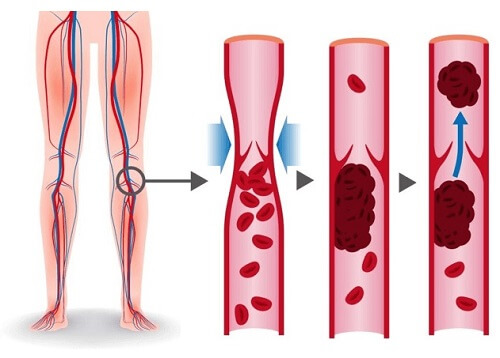
- Obesity
- Smoking
- Dehydration
- Previous DVT
- Surgery
- Certain medications e.g. HRT or contraceptive pill
- Certain medical conditions e.g. heart failure, varicose veins
- Long periods of inactivity e.g. travelling or on bed rest
Swelling behind the knee, calf or leg from a DVT is usually treated with anti-coagulants, blood thinners such as warfarin, which you will need to continue for at least 3 months to reduce the risk of recurrence.
A DVT lump behind the knee is a medical emergency, particularly when these symptoms are combined with breathless or chest pain – seek urgent medical care if you suspect you may have a DVT.
6. Synovial Sarcoma
A synovial sarcoma is a malignant growth that forms a cancer lump behind the knee.
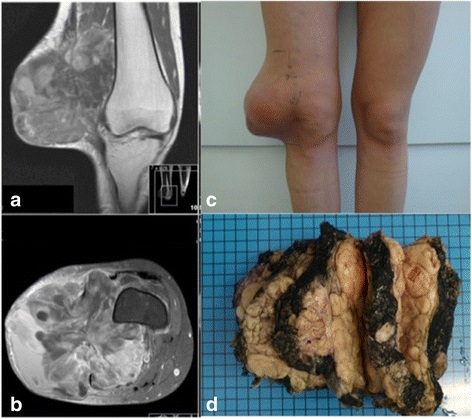
Whilst a rare cause of swelling behind the knee, a sarcoma is serious and requires prompt treatment.
Sarcomas are most common in young adults and the typical presentation is a cancer lump behind the knee that is:
- Larger than 5cm
- Increasing in size
- Usually painful, but not always
NICE guidelines, from the National Institute for Clinical Excellence, states that a soft tissue lesion, i.e. a lump behind the knee, greater than 5cm diameter, increasing in size, requires prompt investigation such as an ultrasound or CT scan.
If the scan reveals the your lump behind the knee is a sarcoma, you will be referred to a specialist team for treatment which will depend on the stage and grade of the sarcoma and may involve surgery, radiotherapy and/or chemotherapy.
Swollen Knee Treatment
When it comes to looking at the best treatment options for swelling behind the knee, it will depend in part as to what the underlying cause of the lump behind the knee is. But in most cases, swollen knee treatment will start with a combination of:
- RICE: Rest, Ice Compression & Elevation
- Steroid Injections
- Aspiration
- Medication
You can find out loads more about these and other possible options in the Swollen Knee Treatment article.
What Else Could It Be?
There are a number of other conditions that can cause pain behind the knee without typically causing much, if any, back of knee swelling– visit the back of knee pain section to find out loads more.
Alternatively, it may be that there is swelling all around the knee, not just at the back, in which case, visit the swollen knee section. Or the swelling may be located in a different part of your knee - find out more in the Swelling On Side Of Knee, Front Knee Swelling, Swelling Below The Knee & Swelling Above The Knee articles.
Summary Of Lump Behind Knee
The most common cause of swelling behind the knee is a Baker’s Cyst
If there is back of knee pain and swelling following a sporting injury, suspect a hamstring tear or calf tear, particularly in middle aged men or if there was a “popping” noise at the time of injury.
Swelling behind the knee that is accompanied by bruising and a palpable dip is likely a hamstring tear or calf tear.
People with knee arthritis who develop back of knee swelling most likely have a Baker’s Cyst.
A lump behind the knee that pulsates or throbs is typically a popliteal aneurysm.
Pain and swelling behind the knee or calf accompanied by redness and warmth could indicate a DVT and warrants immediate medical attention.
A lump behind the knee that is over 5cm and getting larger should be evaluated promptly to rule out sarcoma.
Swelling behind the knee no pain is likely to be a popliteal aneurysm or small Baker’s Cyst.
Back of knee swelling with pain may be a large popliteal cyst, gastrocnemius tear, or more rarely a DVT or synovial sarcoma.
If you suspect your lump behind the knee is a DVT or sarcoma, seek immediate medical assistance.
You may also be interested in the following articles:
- Swelling Above The Knee
- Swelling Below The Knee
- Swollen Knee Treatment
- Pain Behind The Knee
- Knee Pain Diagnosis
- Burning Knee Pain
- Knee Pain On Stairs
Check Out Our Latest Book
"Beat Knee Pain: Take Back Control" tells you everything you need to know to help you work out what is wrong with your knee and gives you loads of great advice on how to get back to doing what you love. It has an average rating of 4.8/5 and is ranked the #2 Best Seller in Orthopedics on Amazon*.
*Ranked #2 Best Seller in Orthopedics (Kindle Store) on Amazon.com in October 2021
Related Articles
Page Last Updated: 12/06/24
Next Review Due: 12/06/26
